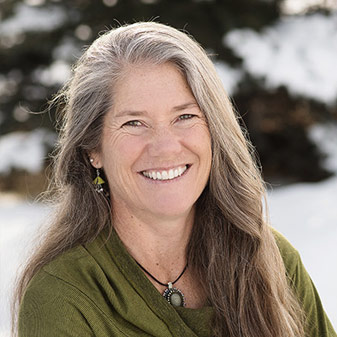“Our climate crisis may at times appear to be happening slowly, but in fact it is happening very quickly—and has become a true planetary emergency.” —Al Gore
Al Gore and others who believe in human-caused global warming think that the earth is approaching a tipping point—one where the level of carbon dioxide emissions caused by humans will result in catastrophic and irreversible consequences to life on earth. This idea has triggered a global panic. Fear mongering is effective because it feeds our emotions, but do such tactics actually help improve life on earth?
Across the spectrum, emotions motivate behavior and can be a powerful mechanism for learning. This tool is used to persuade, such as in advertising, and to teach because it motivates an excited response that enhances learning, as described in Ted Brader’s book, Campaigning for Hearts and Minds.
Emotion is also used to motivate action. Studies show that fear tends to trigger a stronger response than other emotions. Furthermore, evidence shows that the more repetitive the story, the greater the fear becomes and the more likely people are to respond. This is the science of fear.
Kids are taught that all recycling is good, big business is bad, and that rich countries cause the most environmental degradation.
Of course, fear is the exact response desired by those trying to persuade people to act in a certain way. The mission of the Alliance for Climate Protection, chaired by Gore, is to “persuade” people there is a climate crisis. The focus of the Alliance is to “present [its] solutions to the general public” (www. climateprotect.org). The Alliance provides information, it does not motivate knowledge.
This is a significant issue for the environmental education community. Using the science of fear teaches people what to think, not how to think. It is a means to advocate a desired outcome rather than to motivate creative problem solving.
There is no doubt that teaching environmental issues can be a daunting task. It requires extensive time and research to understand how humans impact the environment. But it does not require an expert in the field to help students learn how to think about environmental issues.
The key is to teach students to analyze information provided by others and to evaluate its legitimacy. This process allows one to take information, prioritize for themselves the issues of greatest concern, and help create solutions. It is often perceived, for example, that environmental quality in the United States is waning. According to 2009 Gallup polls, the majority of Americans believe the environment has been degrading over the past decade. And more than half of the population is still worried about pollution in our drinking water, rivers, lakes, soils, and air. Yet statistical evidence, such as that displayed in The Improving State of the World by Indur Goklany, shows that we live in a cleaner and healthier world than ever before.
Start’Em Young
Fear about environmental degradation starts at a young age. Preschoolers are preached to about being green. Kids are taught that all recycling is good, big business is bad, and that rich countries cause the most environmental degradation. Unfortunately, the facts are often missing. Recycling is a manufacturing process (it may or may not be more environmentally friendly than using raw materials), big businesses get big by providing goods and service that citizens desire, and, over the long-term, increasing incomes often result in less pollution.Very poor societies invest little in environmental quality because the resources they have are used for survival.
The fear of environmental degradation is fostered by children’s books. Hoot, for example, by Carl Hiaasen, is an entertaining story about a group of renegade kids that save burrowing owl habitat from a big business trying to build a new restaurant. Student newspapers also promulgate environmental myths. In a Scholastic News Report story, a character says, “We are running out of landfill space.” The intention is to motivate kids to recycle. Regardless of whether recycling is good or bad, we are not running out of landfill space. All of America’s trash for the next century could be dumped on Ted Turner’s Flying D ranch in Montana with more than half of the ranch’s 114,000 acres to spare, according to economist Daniel K. Benjamin.
Even classroom textbooks are influenced “by an ideological view that presents human beings as evil,” according to Dr. Michael Sanera, director of the Center for Environmental Education Research. Sanera compared science textbooks used in sixth through tenth grades in Wisconsin schools. Though he felt the textbooks all did a good job explaining the carbon cycle and greenhouse effect, nearly all books used in the study focused only on the human causes of climate change and all of them predicted catastrophic impact.
With a contrasting view, a text that questioned the human role in global warming has undergone great scrutiny. “The earth has become warmer, but is this mostly the result of natural climate changes, or is it heavily influenced by humans putting greenhouse gases into the air,” James Q. Wilson and John Dilulio, Jr., ask in their 2005 American Government text. Though a legitimate scientific question, the authors and publisher have been attacked by multiple media outlets, for what many have described as disputing a well-kniwn fact. Friends of the Earth, for example, said that referring to global warming as being “enmeshed in scientific undertainty is to dismiss the work ofour nation’s and the world’s top climate scientists.” So heavy was the pressure that the newer edition, published late in 2008, was changed to say “science doesn’t know how bad the greenhouse effect is.”
Teaching the Truth
The Friends of the Earth website says that we should “teach the truth about the environment.” But the truth about science and the environment is that much of it is enmeshed in uncertainty—making it difficult to teach because it is not always conclusive and remains a learning process.
Our understanding of global warming is not definitive. The task of measuring an average global temperature is a case in point. Temperature measurements are collected from around the globe and averaged. The average must be adjusted for distortions created by location and land use. Temperature stations are located inconsistently throughout the globe at different longitudes and elevations, the majority in the northern hemisphere. Measurements are often taken where land use has changed, from a farm to a parking lot, for instance. Mathematical adjustments are made to correct for these variations. For example, NASA scientist James Hanson admitted that the global mean temperature estimates may be in error as much as .7 degrees Fahrenheit. The IPCC estimates total warming over the last century to be about 1 to 1.5 degrees Fahrenheit.
To really “teach the truth,” we must teach students of all ages to become critical thinkers and to gain knowledge, not just information, from science. The knowledge from science can be learned through the scientific method—the process of analyzing observations by creating hypotheses and trying to discredit them. If a hypothesis can’t be debunked, it may or may not be true. As the National Environmental Education Advisory Council notes, there is a difference between information, which is used to provide facts about a specific topic, and education.
The key to analysis is understanding that correlation is not causation. Each summer ice cream sales and the number of shark attacks increase. Does this mean eating more ice cream makes sharks more aggressive?
With the ubiquitous nature of information, it is fundamental to decipher the good from the bad. It is crucial to understand the information a graph or table provides, and just as important to understand the information that it does not provide. Teaching students to interpret charts and the underlying data will help them perform objective analysis. Students can then evaluate the existing evidence and data in an attempt to reject the hypothesis.
How to Analyze
The key to analysis is understanding that correlation is not causation. Each summer ice cream sales and the number of shark attacks increase. Does this mean eating more ice cream makes sharks more aggressive? This is an example of correlation where observable incidences occur together, even though one may have nothing to do with the other. Nonetheless, when two things occur together, it is often assumed that one must cause the other. But it is likely some outside variable such as warmer weather is the real culprit.
There is a correlation between historic global temperatures and carbon dioxide levels. Data show the two have moved together for more than 650,000 years. It is not, however, the correlation that scientists debate, but its causal relationship. The question remains: Does one cause the other? Surprising to many, data in Science magazine shows that changes in atmospheric carbon lag variations in temperature by an average of 800 years. This does not mean that temperature changes are causing atmospheric carbon to change (correlation is not causation) but it makes it less clear that increasing carbon levels are the culprit causing climate change.
Education should focus on knowledge and teaching people how to think. Demonstrating to students the complexities of science and providing them with tools to find and evaluate evidence creates self-reliance and critical thinking—skills that will help provide a wealthier and healthier tomorrow.




